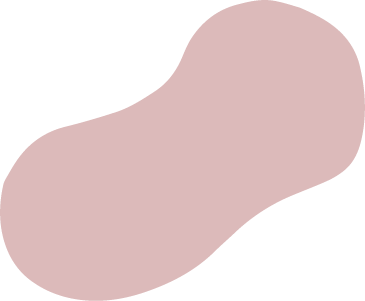A Treatment Plan as Unique
as You Are
The Alma Center is committed to wellness for adolescents and adults with eating disorders. Our approach is rooted in:
- Creating a positive, safe and respectful environment to instill the hope and compassion allowing each person to find their unique path to wellness.
- We do not discriminate on the basis of ethnicity or gender to treat the full range of eating disorders such as Anorexia Nervosa, Bulimia Nervosa, Binge Eating Disorder, Avoidant-Restrictive Food Intake Disorder, as well as other specified feeding and eating disorders, andcommon co-occurring disorders.

 Anorexia Nervosa
Anorexia Nervosa
The third most common chronic illness among adolescents in the United States, anorexia nervosa is a potentially life-threatening eating disorder characterized by self-starvation, excessive weight loss and negative body image. People of all ages develop anorexia but it is most common for onset to occur during adolescence.
Not everyone with anorexia experiences all of the same symptoms and behaviors. If you notice that you, or someone you love is experiencing some or many of the items on this list, we encourage you to reach out today.
- Dramatic weight loss, or failure to make expected weight gains during periods of normal growth (i.e. during childhood, adolescence, pregnancy)
- Excessive weighing of oneself; setting progressively lower and lower goal weights
- Other body checking behaviors such as looking in mirrors, measuring or assessing body parts or frequently asking others for reassurance with questions like “Do I look fat?”
- Changes in weight, even slight fluctuations up or down, have a significant impact on mood and self-evaluation
- Frequent comments about feeling “fat” or overweight despite weight loss
- Body distortions focused on particular parts of their body being “fat” or too big
- Excessive exercise – adhering to a rigid exercise regimen despite foul weather, fatigue, illness or injury
- Denial of hunger
- Dieting, restricting or otherwise limiting food intake
- Rigid counting/calculating calories and/or fat grams (sometimes via smartphone apps or other food/exercise monitoring programs)
- Refusal to eat certain foods, progressing to restrictions on entire categories of food (e.g. no carbohydrates, no meat, no processed foods);
- Collecting or hoarding recipes Cooking elaborate meals for other people but not eating the food
- Development of food rituals (e.g. eating foods in a certain order, excessive chewing, rearranging food on a plate)
- Possible use of laxatives, diet aids or herbal weight loss products
- Consistent excuses to avoid mealtimes or situations involving food
- Individuals at risk for anorexia are often high-achieving individuals with a tendency towards perfectionism.
- These personality characteristics can become heightened during the disorder.
- Increasing isolation; withdrawal from friends and activities that were once enjoyed
- Symptoms of depression and anxiety (this can be a sign of an underlying co-occurring disorder or may be a biological response to extreme low body weight)
- Irritability, moodiness
- Interpersonal conflicts
- Defensive stance when confronted about weight or eating behaviors
- Low energy and fatigue
- Wearing layers or baggy clothes to hide weight loss (and to keep warm as body
- temperature drops)
- It can be very easy to confuse behaviors in the early stages of anorexia with a simple desire to “eat healthy”, “get in shape” or “just lose a few pounds”.
 Bulimia Nervosa
Bulimia Nervosa
Bulimia nervosa involves a recurring pattern of binge eating, followed by dangerous compensatory behaviors. A binge is defined as eating an amount of food that is definitely larger than most would eat, within a relatively short amount of time. To counteract the calories and relieve this discomfort, some engage in harmful compensatory behaviors such as self-induced vomiting, misuse of laxatives, diuretics, or other medications.
According to NEDA, Only 6% of people with bulimia receive treatment for their disorder. One reason these numbers are so low is because it often goes unidentified. It’s important to know what behaviors to look for that might suggest someone is suffering. Below is a list of some common warning signs and red flags that might indicate you or a loved one has bulimia nervosa.
- Preoccupation with weight and body shape
- Dramatic weight fluctuations up or down
- Frequently or excessively weighing oneself
- Changes in weight, even slight fluctuations, have a significant impact on mood and self-evaluation
- Negative and self-critical comments about one’s body/weight
- Excessive exercise – adhering to a rigid exercise regimen – often accompanying
- periods of fasting to counteract or “prepare” for binge episodes. This behavior is
- sometimes referred to as “exercise bulimia”
- Disappearance of large amounts of food in short periods of time or the existence of wrappers and containers indicating the consumption of large amounts of food.
- Eating until the point of discomfort or pain
- Frequent trips to the bathroom immediately after meals
- Any consistent signs or smells of vomiting
- The presence of wrappers/packages of laxatives, diuretics, enemas
- Fasting, dieting, restricting or otherwise limiting food intake for a specified amount of time, followed by increased eating/binging
- Avoiding mealtimes or social situations involving food for fear of losing control/bingeing in a public setting
- Eating alone or in secret
- Hiding or hoarding food
- Changing lifestyle, daily schedules or establishing rituals to make time for binge-and-purge sessions (Ex: repeatedly skipping a class after lunch or frequently leaving events right after the meal is served)
- Withdrawal from usual friends and activities
- In general, behaviors and attitudes indicating that weight loss, dieting, and control of food are becoming primary concerns
- Symptoms of depression and anxiety (this can be a sign of an underlying co-occurring disorder )
- Irritability or fluctuating moods
- Substance Abuse
- Signs of self-injury
- Lying about food or making up excuses to try to hide behaviors
- Interpersonal conflicts
- Defensive stance when confronted about weight or eating behaviors
- Low energy and fatigue
 Eating Disorders & Common Co-Occurring Disorders
Eating Disorders & Common Co-Occurring Disorders
The term “co-occurring disorders” refers to an individual being affected by two or more disorders at the same time. When an eating disorder occurs concurrently with another diagnosis and it is not identified or addressed, it can significantly interfere with the wellness process.
Co-occurring disorders require proper assessment and evidence-based treatment that is tailored to the unique individual’s experience.
At Alma we provide thorough assessment, including psychological testing to properly identify and rule out any co-occurring disorders. This is a necessary step to ensure that an individual’s treatment plan can appropriately address any intersection of co-occurring disorders and promote wellness. Some of the most common co-occurring disorders in individuals with eating disorders include:
Depression: Most of the research indicates that 50- 75% of patients with eating disorders will also experience major depression at some point in their lives.
Anxiety Disorder: About 2/3 of the individuals with eating disorders will struggle with one or more anxiety disorders in their lifetime. Anxiety disorders most commonly co-occurring with eating disorders are Obsessive Compulsive Disorder (OCD) and Social Phobia. Others include Generalized Anxiety Disorder, specific phobias, and PTSD.
Post-Traumatic Stress Disorder (PTSD): There is a high co-occurrence of trauma and eating disorders. PTSD is a type of anxiety disorder that can develop following exposure to a traumatic event that threatens your safety or makes you feel helpless. Such events can include physical or sexual abuse, military combat or a natural disaster.
Alcohol / Substance Abuse: About half of all individuals with eating disorders also struggle with a substance use disorder. Because it’s important to address both disorders simultaneously.
 Avoidant/Restrictive Food Intake Disorder (ARFID)
Avoidant/Restrictive Food Intake Disorder (ARFID)
The ARFID diagnosis describes individuals whose symptoms do not match the criteria for traditional eating disorder diagnoses, but who, nonetheless, experience clinically significant struggles with eating and food. Symptoms of ARFID typically show up in infancy or childhood, but they may also present or persist into adulthood.
There are many types of eating problems that might warrant an ARFID diagnosis – difficulty digesting certain foods, avoiding certain colors or textures of food, eating only very small portions, having no appetite, or being afraid to eat after a frightening episode of choking or vomiting.
You are Exactly Where You Need to Be
The specialized treatment approach of individual, group, nutritional, neurotherapy, and expressive therapies treat each individual’s own unique set of causes, symptoms and health risks. The path to wellness often extends beyond the individual. Alma also provides support for parents, caregivers, and all family members.


